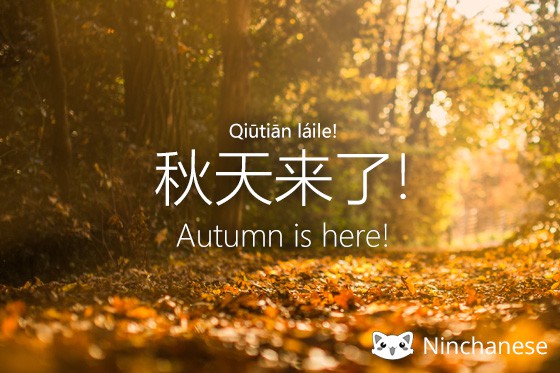Guess what’s special about today? That’s right: fall is here! Goodbye, glorious summer days, and welcome leaves turning beautiful colors and lighting up the trees! Fall, or autumn, is a beautiful season in its own right! Do you know how to say fall in Chinese? Let’s learn how right now!

秋天来了!
Qiūtiān láile! Fall is here!Let’s break down the sentence:
- 秋天 qiūtiān is fall.
Fun fact: the character 秋 is composed of two parts: 禾, which means cereal, grain, and 火 which means fire. When we tell you why, you’ll be “oh, that makes so much sense”! See, at the end of the summer, Chinese farmers harvest their crops and celebrate their harvest. That’s in part what the Mid-Autumn festival is about. Then, to prepare their fields for the next harvest, farmers would burn the stalks that remained once the grains have been collected. Apparently, this made the fields more fertile and it was a tradition to do so. Therefore, in Ancient China, 秋, autumn was the time where you burned (火) the husks of 禾 (grains). That’s how the character for autumn was created. Chinese characters have very interesting histories, don’t you think?
- 来 lái is to come, to arrive,
- 了 le is a grammatical marker that can indicate several things. Here 了 indicates a change of state: summer is no more, and fall has arrived! That’s quite a change of state wouldn’t you say? To learn more about how to use 了 when it’s placed at the end of the sentence, like this, read this easy-to-follow Chinese grammar lesson on 了, the change of state signaler.
What do you think of autumn?
We hope you’ll enjoy this new season!
The Nincha Team
Stay in touch with us on Facebook, Twitter, Instagram, and Pinterest.
